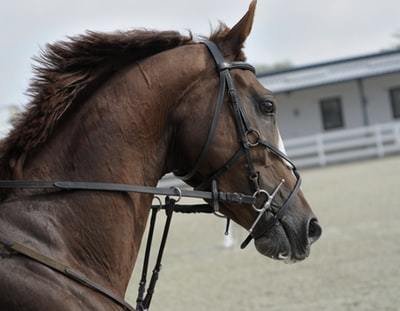
Navicular syndrome is a disease that will cause lameness to your horses or the inability to walk. It is due to the degeneration of the navicular bone and the tissues surrounding it found at the foot of your horses. It is a small flattened bone, which can be seen directly at the back of the coffin joint and is attached to the pedal cone. This disease occurs in a horse’s forelimbs and not on its hind limbs especially to those who are used in sports such as show jumping, dressage, endurance riding, horse racing and many more. Learn about navicular horses on this page.
Damage in the navicular bone may occur because of the trauma experienced by the bone or maybe the lack or inference of the supply of blood to the bone. It will result in deep pain to horses as it damages the navicular bursa or the navicular ligaments and the deep flexor tendon.
The most evident symptom for navicular disease is the low-grade bilateral lameness. It may only occur moment by moment when horses are exposed in wrong areas or hard ground or in some limited areas. This may also be very evident when you see your horses unevenly walking or running. It can be diagnosed through radiography, reading of history and symptoms. A horse may also be avoiding to put weight on the foot affected that will cause the uneven walking. Some of you might worry about your horses’ condition but here is how you treat your horse from the navicular disease.
Gallium is an element found in the periodic table which is known to be against bone resorption and could possibly treat diseases that particularly arise in bones. There are a number of researches that aim to prove the effectivity of the gallium to treat diseases on sport horses including navicular disease.
Gallium nitrate is often used in treating symptomatic hyperglycemia which a secondary to cancer. Its job is to prevent bones from breaking down and by lowering the amount of free calcium in the blood, it inhibits the osteoclast activity. As it prevents bones in breaking down, its counterparts the mechanism of the navicular disease which is the degradation of the navicular bone. But its main effect is that it hinders bone resorption as it also inhibits the activity of bone osteoclast.
Some of the study shows that Gallium nitrate shows to be an effective pain reliever and treatment for horses with navicular disease. Also, some study shows that being contaminated with Aluminum, maybe the reason why navicular pain occurs. Aside from taking care of your horses and treating them with gallium nitrate, preventive measures are always best in taking care of your horses. Keeping them from being overridden for those who are sport horses owners and for those who own horses for farms and ranches, make sure that you won't overwork your horses and avoid them from too much exposure to hard and rocky ground and enclosed areas for a very long time.
